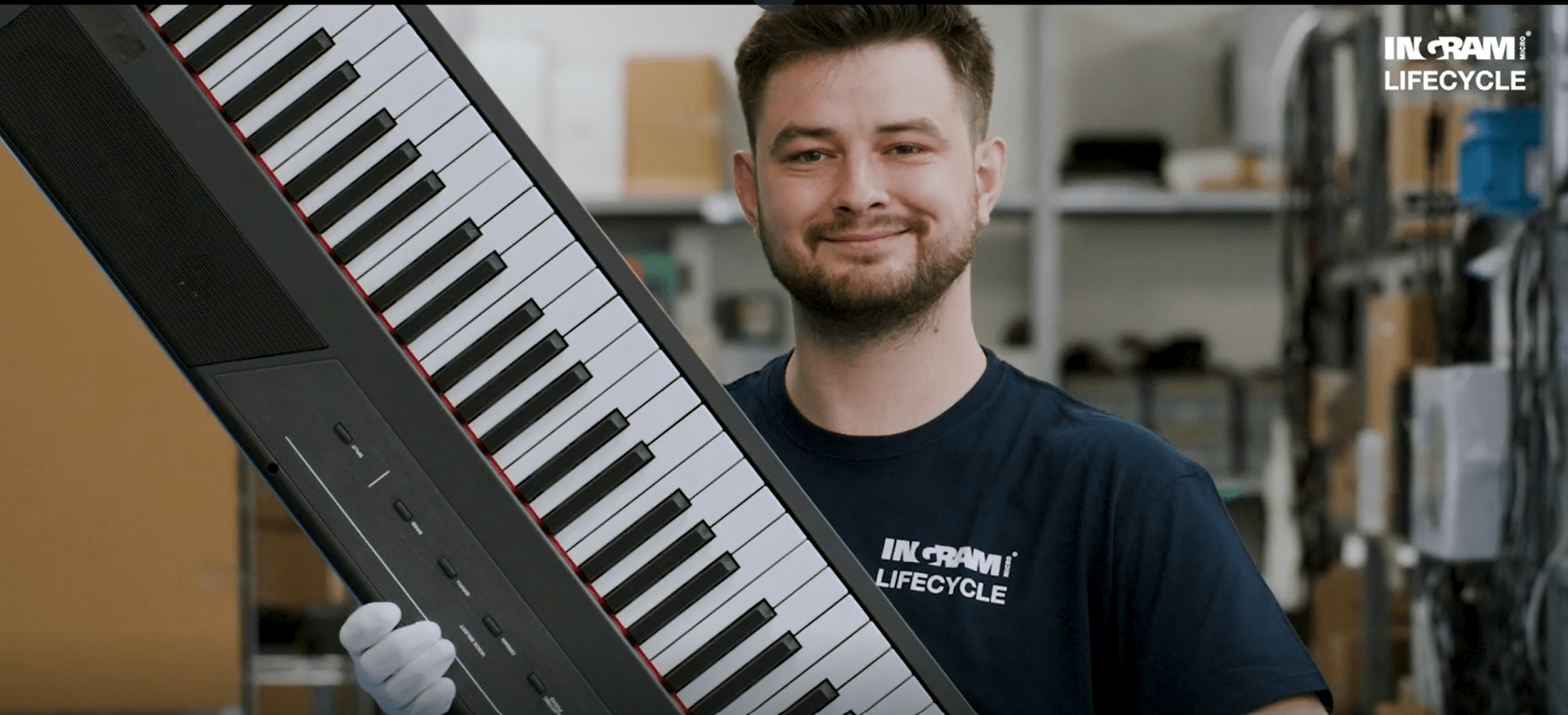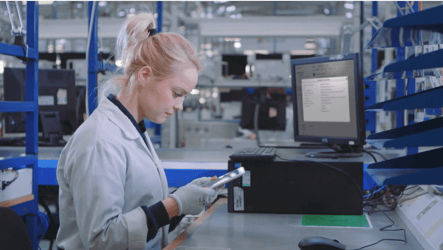Are you unsure why you should integrate recommerce into your reverse logistics process? Perhaps you don’t know how to do this to ensure the extra activity boosts your business goals rather than detracts from them.
Ingram Micro Lifecycle has been active in recommerce for over 14 years. We have an extensive network of secondary buyers for preloved and refurbished technology. We monitor live market pricing to achieve the best value recovery opportunities for our customers.
In this article, we’ll explain the benefits of utilizing recommerce programs both for profitability and sustainability and the best practices for success.
What is recommerce?
Recommerce is the process of selling a used product. Whether just out of the box or displaying some signs of use, the previously owned product can no longer be deemed ‘new’. Recommerce may also be referred to as reselling or aftermarket sales. Buyers of these products may repair, refurbish, recycle, resell, or reuse them.
Why should you integrate recommerce?
As the industry experiences a shift from an ownership mindset towards a sharing mindset, recommerce enables the satisfaction of this demand. More consumers are willing to purchase preloved devices, often preferring this over new technology. The global recommerce market value will reach $289 billion by 2027. We can attribute this to both sustainability and economic reasons.
Sustainability factors
With the demand for used products growing, recommerce ensures a stock supply for this market. This reduces the pressure on manufacturing for brand-new products that use raw materials and releases CO2 into the atmosphere.
For example, choosing to extend the life of a smartphone can reduce its environmental impact by 50%.
By integrating recommerce into your reverse logistics process, you create a source of those used products for lifecycle extension.
Even if the product is beyond economical repair, parts harvesting and donation enable the refurbishment of others. The product could live on or enable another to live on instead.
This also enables a circular economy, extending the lifecycle of products so they don’t become e-waste.
Profitability factors
Introducing recommerce to your processes maximizes value recovery. You no longer have a use or need for these products, so by putting them onto the secondary market, you’re getting some value return. If they sit in storage or go to a landfill, you gain nothing – you’re losing the storage space and harming the environment. Recommerce provides an additional revenue stream.
Without the additional storage space that houses unused and unwanted products, you may also save costs without the extra expenditure. This is particularly the case for larger technology products, such as Small Domestic Appliances.
It’s a myth that selling used devices cannibalizes new product sales. Instead, you’re opening your brand and products to a new segment of the market – those that were priced out by your price point, or that simply don’t want to buy brand-new.
The quicker you’re able to turn the products around for resale, the higher the value you’re more likely to recover. Moving swiftly combats depreciation that occurs due to a variety of factors. The higher the original starting price point, the more rapidly depreciation lowers the resale value.
While the used products are sitting on your balance sheets, there’s the risk that newer models may be released, which can cause the resale value of your products to plummet. It’s best to aim to sell on the secondary market as quickly as possible to obtain maximum value while demand for the product is at its highest.
Tips for recommerce best practice
Now that we’ve touched on the sustainability and financial reasons why integrating recommerce into your reverse logistics is beneficial, here are 6 top tips for best practices.
1. Make recommerce integral to your reverse logistics capabilities. This means redefining your processes and fixing recommerce as a solid output. Align your business strategies and goals to incorporate the outcomes of recommerce. Communicate to your stakeholders, where appropriate, the performance metrics of this activity in terms of sustainability.
2. Change your mindset and business goals towards monetizing the assets. Ensure you see the financial benefit as the outcome of the reverse logistics process rather than the additional waste your products may typically become. Move away from the potentially negative impact your reverse logistics process has by instead striving to deliver more sustainable outcomes.
3. Consider offering trade-in or buyback on products where practical to do so. Providing this activity would complement and enhance your business functions as it boosts your recommerce outputs. This extra activity will encourage new customers to your business and improve customer retention.
4. Don’t just resell- grade, repair, and refurbish too. Seek a third-party partner with the expertise, resources, and technical know-how to accurately assess and improve the quality of your assets. This means that you can maximize the potential return on resold products by improving their value from the outset. These activities will uplift the cosmetic grade, function, and quality of the device so you get more money back, as opposed to simply reselling the product how it comes into you, warts and all.
5. Build your recommerce network. Put effort into creating contacts and relationships with those who buy on the secondary market. Research the platforms that best suit you for reselling products. Boosting your knowledge, awareness, and presence in these networks will increase the likelihood of you getting the best price for your used, processed, and resaleable assets.
6. Don’t restrict yourself. Seek to be active on more than one kind of sales channel. Look for B2C, large-scale platform resale channels, trade channels, and specialist channels for your industry type. For example, insurance channels for smartphones. These will boost your product exposure to a wider range of potential secondary customers.
Are you ready to integrate recommerce?
While there is a range of financial and sustainable benefits to incorporating recommerce into your reverse logistics strategy, you need to ensure you’re in the best position to efficiently achieve this.
Ingram Micro Lifecycle offers an end-to-end solution for returns management which includes customer care, repair and refurbishment, and recommerce. We know from experience that the fewer links in our customer’s supply chain, the fewer issues they experience. There’s also the added benefits of swifter communication and more rapid processing.
Get in touch with us today to discuss your reverse logistics challenges and how we can help integrate recommerce for you.














